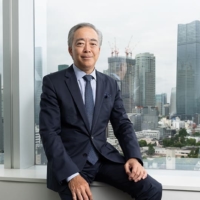Trading his tie and suit for a workman's uniform and rubber boots, Environment Agency chief Kenji Manabe on Monday visited dioxin hot spots in and around Tokorozawa, Saitama Prefecture, as requested by the governor late last month.
Manabe met with Gov. Yoshihiko Tsuchiya and members of Tokorozawa's Tomioka Japan Agriculture Cooperative branch who have suffered a devastating drop in demand for their produce since a Feb. 1 television report alleging that Tokorozawa-grown vegetables were highly polluted with dioxin.
Later he inspected two nearby waste incinerators, one privately run and one municipally run, where he was met by citizens protesting the operation of the incinerators and carrying placards reading "agriculture and waste incineration are incompatible."
"Today's inspection has reinforced just how difficult the waste incineration issue is," Manabe said, adding that the excessive concentration of incinerators in the Tokorozawa area is the result of inadequate planning.
More than 14 incinerators are squeezed within a 500- meter radius near Tokorozawa, although five of them have stopped operating due to failure to meet more stringent emissions guidelines that went into effect in December.
Manabe reiterated the government's plan to forge basic guidelines for tackling the dioxin issue by the end of March and stressed that intergovernment cooperation will be crucial to successfully address the problem. Gov. Tsuchiya expressed his surprise and gratitude at the government's rapid response.


















With your current subscription plan you can comment on stories. However, before writing your first comment, please create a display name in the Profile section of your subscriber account page.